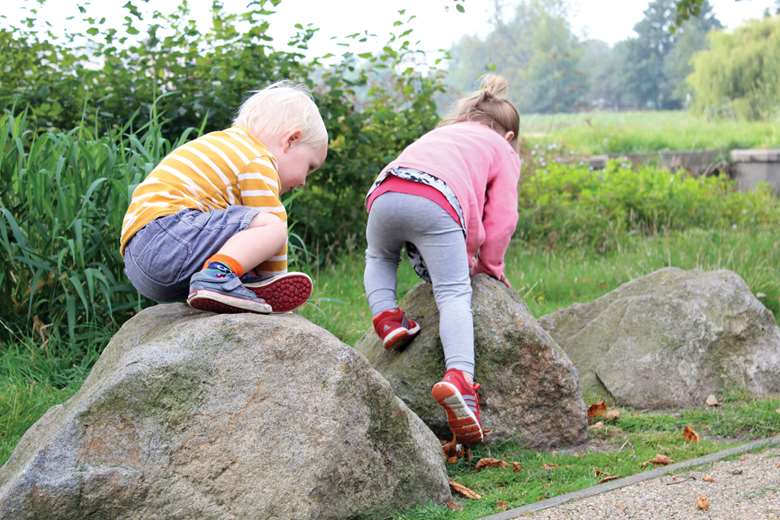Skills for the Job: How to run outdoor activities
Cath Prisk
Tuesday, March 17, 2015
Making the outdoors an everyday experience, whether for young children or teenagers, can have huge benefits for all involved.

Why is it good to get children and young people outdoors?
The days are getting longer and warmer, blossom is budding, the air smells sweet, and so your mind turns to getting outdoors. Well how about getting the children and young people you work with outdoors too?
Whatever part of the children's workforce you call your own, there is nothing that can be done inside that cannot also be done outside. And the direct and indirect benefits can be huge for reducing stress; getting more active; making friends; increasing confidence and resilience; increasing creativity; getting more connected to the environment; reducing allergies and improving immune systems; and having more fun.
It's not a treat. It is – or should be – part of every child and young person's day, and getting outdoors is a really easy way for us to achieve our objectives too.
Where do I start?
A good place to start is to think about where you liked to go outdoors as a child and why. Maybe discuss those experiences with colleagues, with the children or young people themselves, and with their parents. Then agree together the outdoor experiences you are seeking for the children and young people in your charge.
Think small to start with and look to involve parents and colleagues as well as children and young people in the discussions too. Don't let the first time they know little Johnny is climbing trees be when he has fallen out of one.
Prepare for the worst, but celebrate the benefits
Lady Allen of Hurtwood, a founder of adventure playgrounds post-war, famously said: "Better a broken bone than a broken spirit" - and that seems more relevant now than ever before. But so that the spirit is well taken care of, you need to ensure you've done an appropriate risk-benefit assessment.
Risk-benefit assessment is the protocol supported by the Health and Safety Executive, and every area and service will have it's own template. If it doesn't already include a section for benefits, simply add one in there. By understanding the benefits as well as the risks, you will be more confident in discussing why the activities are essential. This is especially helpful if you are planning something that hasn't been done before, such as lighting fires or climbing trees.
What else is needed for a successful outdoors session?
You need to think about clothes, food, drink, first aid kit and toilets, and about the number of adults you need with you. Your local authority or service should be able to advise on any other considerations, including whether you need additional parental consent, especially if you intend to share the experiences of your group on social media or on your website.
The children and young people should be reminded frequently that it is their responsibility to dress appropriately - but bring spares anyway. Water is essential - for adults as well as children. If it is likely to be chilly, think about thermoses of soup, or even bringing storm kettles and making hot drinks.
Where can I get help?
Getting outdoors is increasingly popular and wherever you are, there will be others willing to share. There is a lot of support online: Facebook groups, Twitter lists and websites such as Learning Through Landscapes and Nature Detective. Books like Dirty Learning (Juliet Robertson, 2014) and Mission Explore (Geography Collective, 2010) are full of inspirational activities. Outdoor People too has many links, including advice on how to develop local "wild walks", microadventures on your doorstep.
Resources such as Project Wild Thing (Green Lions, 2013) and Toxic Childhood (Sue Palmer, 2015) are invaluable when making the case for getting outdoors to heads of service or to parents. Join The Wild Network and you'll get in touch with thousands of others interested in getting kids of all ages to roam wild and play free.
Cath Prisk, director of Outdoor People and board member of The Wild Network
Top tips
- Dress appropriately and take spare hats
- Think small and regular microadventures for every day
- Undertake a risk-benefit assessment
- Involve everyone and look for local partners who know the area
- Have fun




